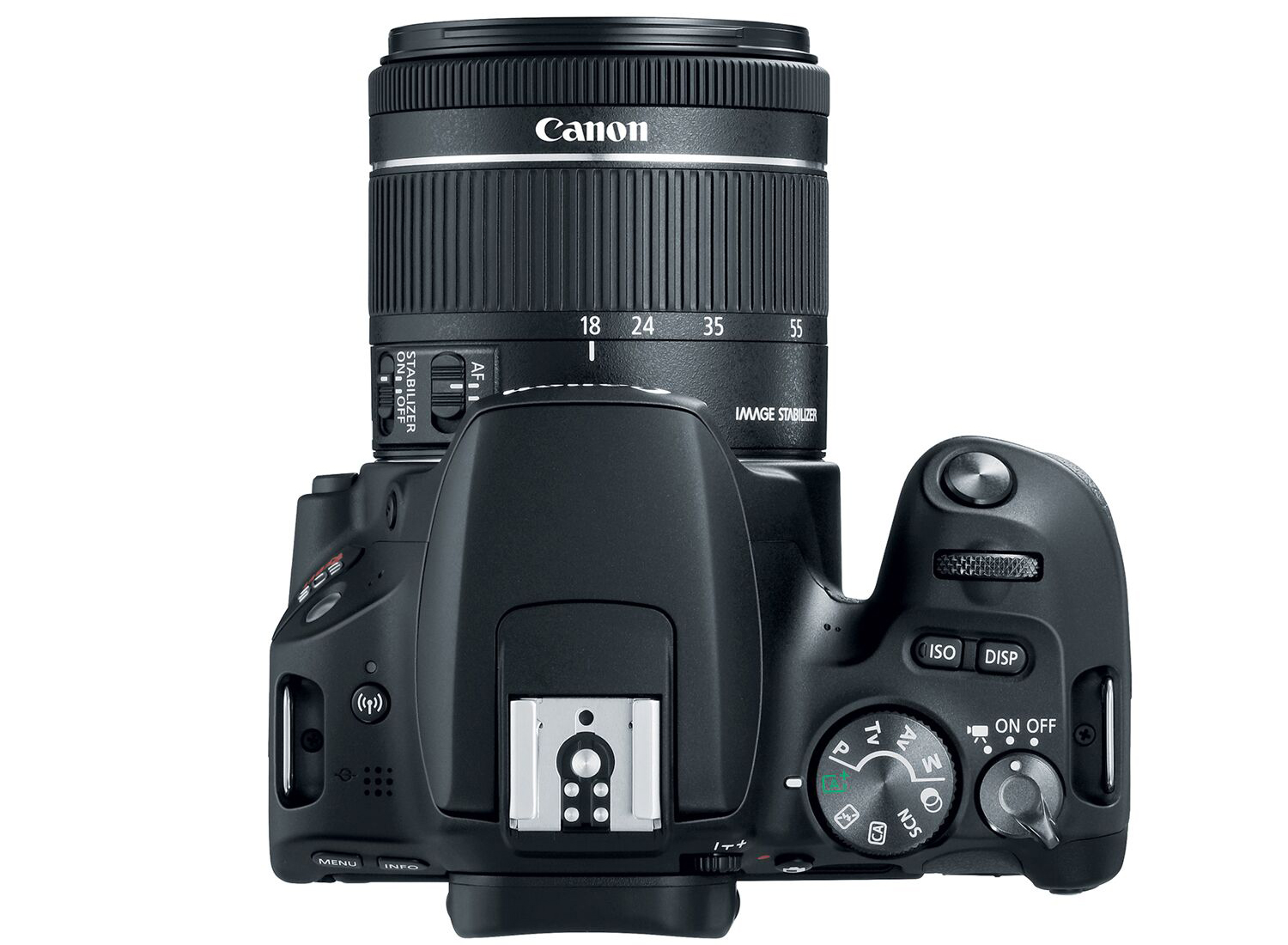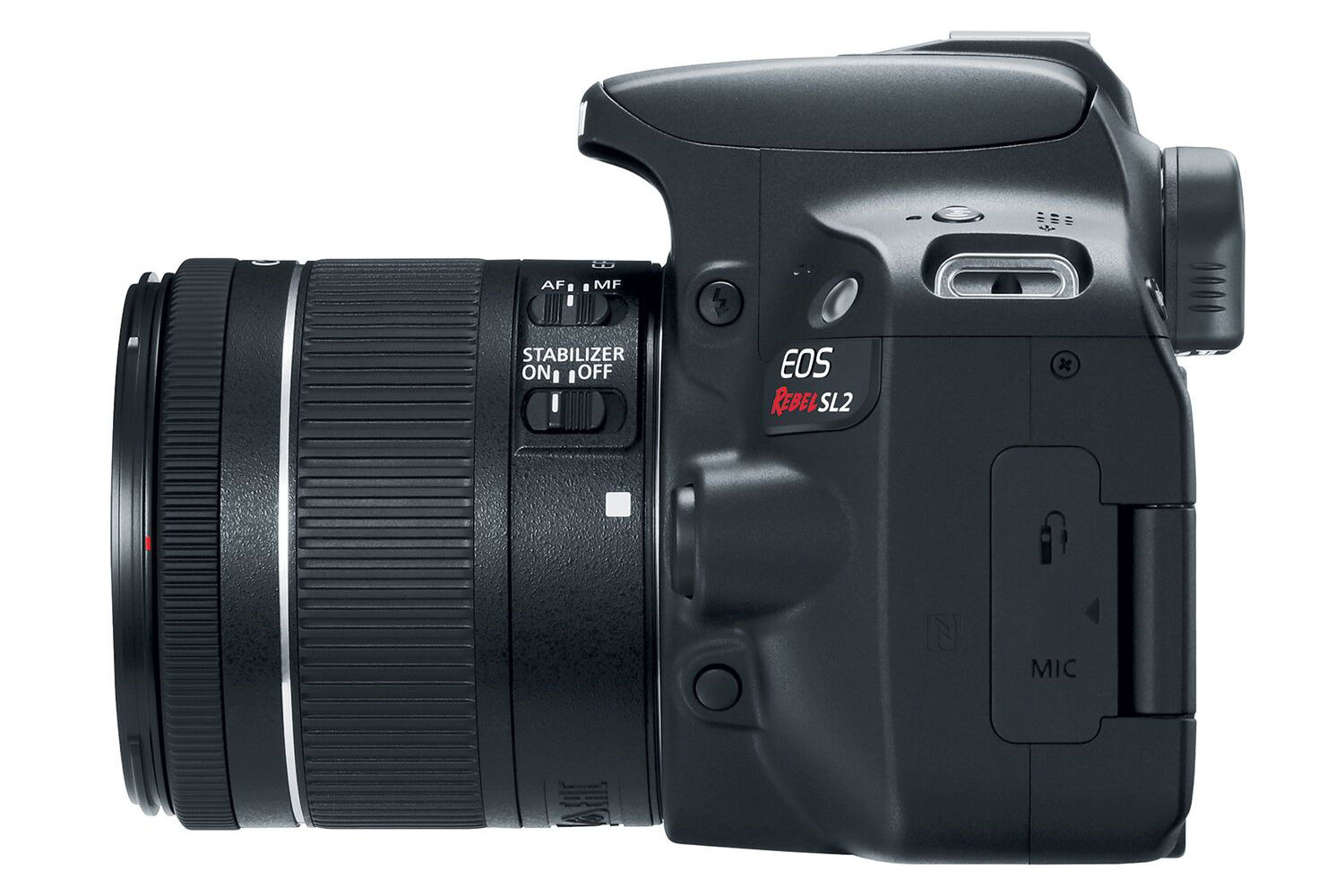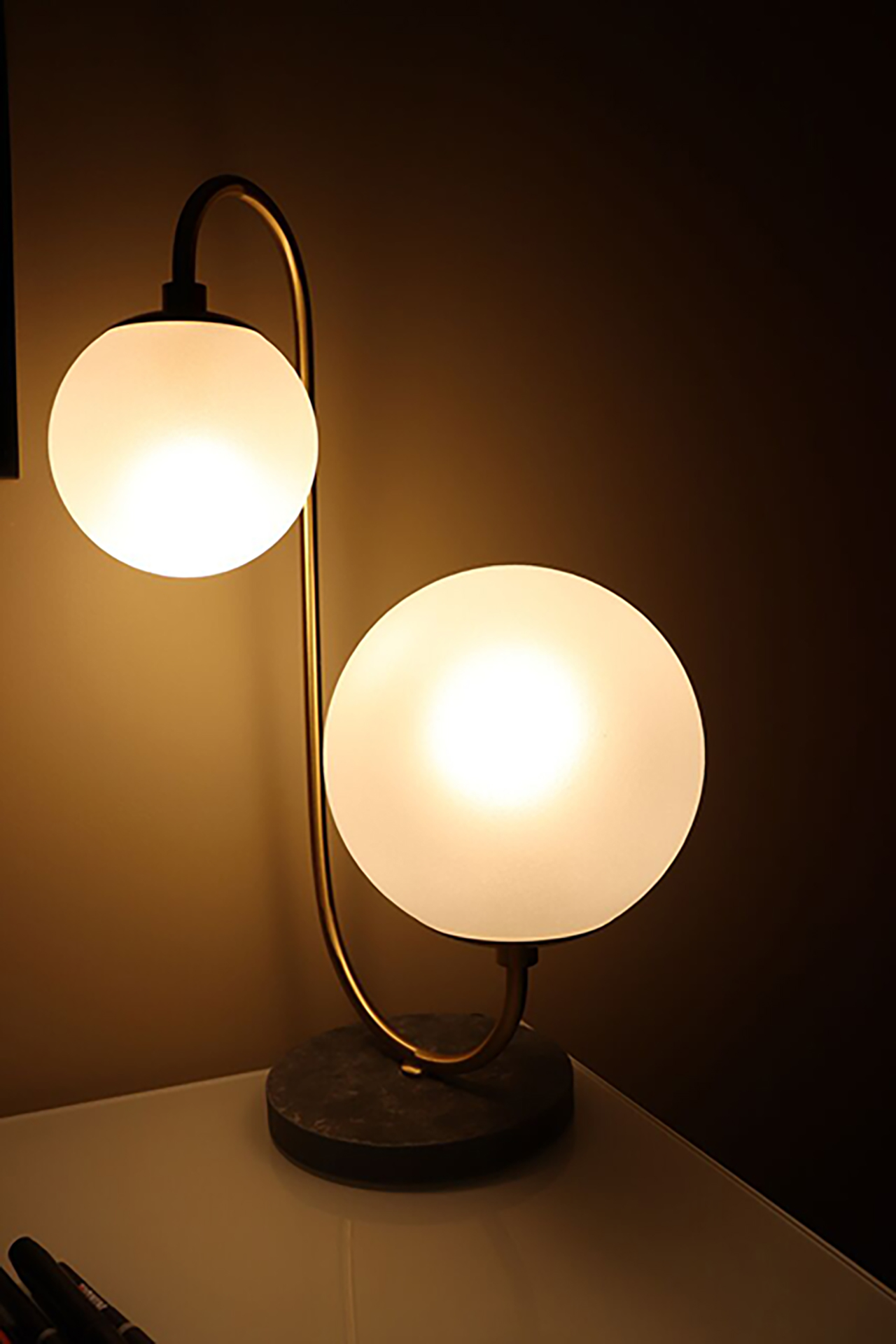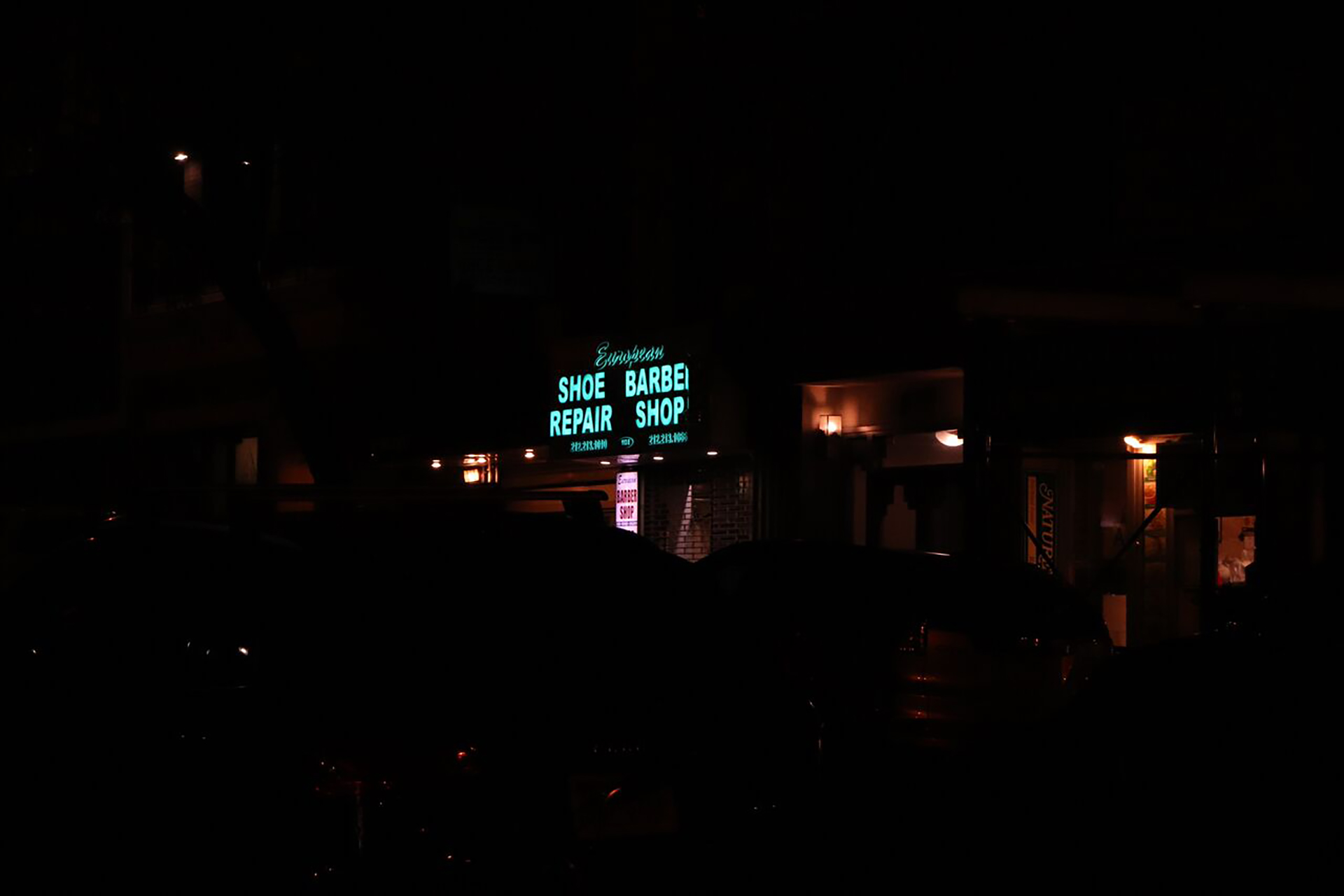Tom's Guide Verdict
The Canon EOS Rebel SL2 is a solid entry-level choice for photographers who want an ultracompact DSLR that's easy to use.
Pros
- +
Compact and lightweight
- +
Improved autofocus in Live View and Movie mode
- +
Fully articulated LCD
- +
Up to 5 fps continuous shooting
- +
Feature Assistant
- +
External microphone jack
Cons
- -
Modest number of AF points
- -
Small optical viewfinder
- -
No 4K video
Why you can trust Tom's Guide
Are most DSLRs too big for your hands? Are most mirrorless cameras too small? Perhaps the Canon EOS Rebel SL2 is just right. This 24-megapixel DSLR is the smallest and lightest of Canon's DSLRs, comes with a fully articulated touch-screen LCD, and has higher ISO and faster autofocus than its predecessor.
At $700 (with the EF-S 18-55mm f/4-5.6 kit lens), the SL2 is on the less-expensive side of the company's lineup, too. Those who want to upgrade from a point-and-shoot or older DSLR will find the SL2's up-to-date features appealing, and beginners can learn from the SL2's Feature Assistant and built-in guides.
MORE: How to Take Great Photos with the Canon EOS SL2
Editor's Note: Canon has released a successor to the SL2; the Canon EOS Rebel SL3 ($649 with 18-55mm lens), which has many of the same features, but lets you record video in 4K. However, the EOS Rebel SL2 is now available for $549 (with lens) or $449 (body only).
Design: Plain and simple, with a twist
Available in black or white, the SL2 measures a mere 4.8 x 3.7 x 2.8 inches and weighs 1 pound, including the battery and SD card. By comparison, the T6, Canon's entry-level DSLR, measures 5.1 x 4 x 3.1 inches and weighs 17.1 ounces, while the EOS M5, Canon's newest mirrorless camera, measures 4.6 x 3.5 x 2.4 inches and weighs 1 pound.

The trade-off for the SL2's size and weight is that, other than the solid feeling of the grip, the camera has a decidedly plastic feel.
Although Canon reconfigured the position of some of the control buttons, the SL2 is a fairly pared-down version of other, higher-end DSLRs. In its quest for simplicity, Canon kept only the most critical dedicated controls, such as ISO, Exposure Compensation, Playback, Menu and Live View. A single command dial sits atop the grip.

The mode dial is Canon's typical style, with Automatic, semimanual and manual options, including Scene Intelligent Auto, Creative Auto, Scene, and Creative Filters options.

A well-organized menu system is available, but like other Canon DSLRs, the SL2 features a Q (Quick Control) button that provides convenient access to settings such as Picture Styles, White Balance and Metering. Once you set up the camera, there's rarely any reason to go into the full menu. But the camera's two My Menu options allow you to create your own menus, putting your favorite settings at your fingertips.

New to the SL2 is a 3-inch, vari-angle touch-screen LCD. With the ability to angle the LCD and adjust brightness, the screen is visible under almost all circumstances. Full touch-screen functionality includes touch focus, touch shutter and the regular assortment of touch gestures (pinch, zoom, etc.). The touch screen is responsive and, like all fully articulated LCDs, can be folded into the camera body to protect the screen while it's in your camera bag.
MORE: Best DSLR Cameras From Beginner to Pro
A built-in pop-up flash is complemented by a hot shoe for attaching an accessory flash. As is common for this class of camera, there's only a single SD card slot. Surprisingly, the SL2 also offers a jack for attaching an external stereo microphone.
Feature Assistant: Guided menus for novices
Unfamiliar with how a DSLR works? The SL2 offers a new Feature Assistant that explains how different aspects of the camera functions work. For example, if you put the camera in Tv (shutter priority mode), a visual with a basic text explanation shows the effects of using a fast shutter speed versus a slow shutter speed. It's a great learning tool, as are the guided menus and shooting screens. They are enabled by default, but photographers who prefer the standard Canon displays and menus can disable them.
Image Quality: Quite good
I shot with the EF-S18-55mm F/4-5.6 IS STM lens, with a 35mm-equivalent focal range of about 29-88mm. Most test images were captured using the Standard Picture Style and Shutter- or Aperture-priority exposure modes.
The image quality was quite good, especially for a camera in this class. Colors are nicely saturated and natural-looking, as you can see in the images below.


The exposure is accurate in pretty much all modes. Even the SL2's center-weighted metering did a good job of exposing the reflective water and sand, as well as the darker grassy foreground in the sample image below. It was bright enough that I could stop down the aperture to f/13 to get a broad depth of field. As a result, almost all of the image — from foreground to background and everywhere in between — looked in focus.

Highlight and shadow details were well-maintained, even in high-contrast scenes such as this late-afternoon beach scene.

High-contrast scenes often produce purple fringing along edges of dark against light (or vice versa). There was no noticeable fringing along the edges of the trees against the bright sky.

The pop-up flash worked well to fill in shadows outdoors, as seen in the images below. If you look closely, you can even see the catchlights (small white reflections of the light) in the girls' eyes.

Canon's auto white balance tends to retain the warm colors of, say, tungsten lighting. With the SL2, as with other newer Canon cameras, you can set the Auto WB to Ambience priority or White priority. The former delivers warmer images (similar to sepia toned) under tungsten lighting, while the latter adjusts for the light and balances the colors to help produce more accurate whites. You can see the difference in the images below:


The SL2 uses an older nine-point autofocus system when shooting through the viewfinder, but the camera was responsive when focusing on a variety of subjects, ranging from children playing to flowers. Images were sharp and detailed, as shown in the flowers below; look closely, and you can see details of the bugs that landed there.
With continuous shooting of up to 5 frames per second (dropping to 3.5 fps when using AI Servo continuous AF), the camera is capable of stopping action, like the girl running in the image below.

Canon has equipped the SL2 with its excellent Dual Pixel autofocus, which kicks in when shooting in Live View or capturing video. This AF system provides speedier and smoother AF in the latter two modes so, unlike with many other cameras, using autofocus in Live View (usually a slow process) is noticeably faster.
Low Light: Don't push it too far
In addition to an Auto ISO option, where the camera automatically adjusts the ISO to enable the chosen shutter speed/aperture combination, the SL2's manually selectable ISO ranges from 100 to 25600. Low-light performance isn't bad, even with noise reduction turned off.

But image noise becomes quite noticeable at ISO 3200, and its grainy effect increases from there. For the best quality, keep the ISO as low as possible, preferably under ISO 3200. Maxing out the ISO at 25600 results in noisy images that probably won't even pass muster for posting online.
Video: Versatile
Video options include full HD (1920 x 1080) at 60/30/24 fps, along with 1280 x 720 and 640 x 480 at 60/30 fps. Movies are recorded in MP4, which is easy to view and edit.
Manual exposure control is available during recording (set the camera to M on the mode dial), but beware that changing settings via the command dial produces a clicking noise. Go into the Setup menu, disable the Beep sound and use the touch screen to adjust settings silently (such as shutter speed, aperture, ISO, and more). If you're just starting out, set the camera to Auto, and let it handle everything.
Thanks to the use of Canon's Dual Pixel AF, autofocusing is smooth and responsive during video capture. Overall, footage is clear and sharp, with accurate focus and exposure. Sound quality was fine for casual videos using the camera's internal microphones, but if you're more serious about your movies, you can use the SL2's microphone jack.
MORE: Best Photo-Editing Software From Beginner to Pro
Video can also be captured using Creative Filter Effects, such as Dream, Old Movies and Dramatic B&W. Time-lapse movies are also available.
Battery life: Mediocre
You're better off shooting with the viewfinder than Live View to get the best battery life (650 shots). When you turn on Live View, battery life drops to a measly 260 shots. If you plan to shoot a lot of video, you might want to pick up an extra battery for extended shooting.
Wi-Fi/NFC/Bluetooth: Easy setup
An important addition to the SL2 is its Wi-Fi and Bluetooth connectivity — a must for all cameras these days.

Canon's free Camera Connect app is available for iOS and Android, and is needed for viewing, transferring images and shooting remotely. Once the app is installed on your mobile device, setup is fairly simple. If you run into problems, the app has a setup guide.
The process of moving images between the camera and your mobile device (or your computer or another compatible camera) can be a little sluggish at times, but the app gets the job done.
Bottom Line
The Canon EOS Rebel SL2 performs admirably for its class and price, thanks to a solid mix of beginner and advanced features. The Canon EOS Rebel T6 ($450 with 18-55mm lens) is cheaper, but it lacks many of the SL2's attractive features, including the fully articulated touch-screen LCD.
If you're on a tight budget, check out the $500 Nikon D3400, which is somewhat larger and heavier, but also delivers excellent image quality, has a good set of features, and lasts twice as long as the SL2. Or, if you're willing to spend a little more (or already have a Canon or Nikon lens or two), the $750 (body only) Canon EOS Rebel T7i is a solid option, as is the Nikon D5600. But both are a little larger and heavier than the SL2. If you've been considering the Canon EOS Rebel T6, save up a little more money, and go for the SL2. You'll get more bang for the buck.
Browse through our Canon promo codes for the latest offers from Canon.
Credit: Theano Nikitas/Tom's Guide
Theano Nikitas is a freelance journalist and photographer. She's been writing about photography for more than 20 years, contributing countless reviews of cameras, lenses, accessories and software packages to Tom's Guide. Her work has also appeared in dozens of other magazines and websites, including CNET, DPreview, PopPhoto, Professional Photographer and Shutterbug.

